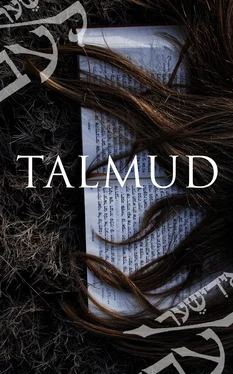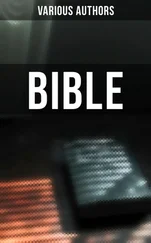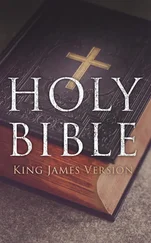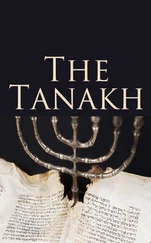c1MISHNA c . Because whole-offerings were sacrificed in complete joints, but sin-offerings, which were eaten by the priests, were usually cut in pieces. Neither must be eaten, because it might be that the latter had been left over from the preceding day and should be burned; but the distinction is made simply in case one had eaten of the meat that was cut up. If he had eaten of the complete joint, he was certainly guilty, but if he had eaten of the cut meat, it could not be said positively that he was guilty.
c2This must also not be eaten, because it may have lain more than two days and a night; but if it is eaten, no one is guilty.
c3Incidentally the rule is laid down as to meat found anywhere in Palestine. If the meat is found in whole joints, it is presumed to be carrion left for dogs, and must not be eaten. During the festivals, when meat is plentiful, it is presumed to be slaughtered meat, and may be eaten.
d1MISHNA d . R. Jehudah states, that if the animal found was a yearling and a male, it is considered a Passover-offering, but may be sacrificed only as a peace-offering, because a Passover-offering must be intended for a stipulated number of persons. (See Exod. xii. 4.) The sages, however, say, that on account of the number of whole-offerings which were brought at the time, the animal found must not be eaten, for fear lest it be intended for a whole-offering and a grave offence be committed. Hence it should be sacrificed as a whole-offering only.
g1MISHNA g . It was not allowed to appropriate any part of a sacrifice designated for some special use for any other purpose. If this was done, however, (unintentionally,) it was considered a trespass, and a trespass-offering had to be sacrificed as expiation for the sin. The ashes of the red heifer did not come under the above ruling previously (for reason, see Siphri), but on account of the frequent misuse of those ashes a decree was promulgated placing them under the same ruling as other parts of sacrifices, which were not to be misappropriated. Subsequently, this Mishna teaches that, there being no further necessity for the precautionary measure, the decree was reversed and the ashes restored to their former insignificance. This was included among the seven decrees.
g2A special decree had to be promulgated to cover this case. Had this not been done, contractors would have refused to furnish birds for offerings, because there were very many birds used, and it was burdensome to properly care for them. Still, R. Jose does not agree to this, claiming that the contractor might use it for other purposes and thus save the Sanctuary the loss. According to Maimonides, the Halakha prevails according to R. Jose.
Table of Contents
MISHNA: ( a ) All spittle a1to be found in Jerusalem is considered clean, except such as is found at the upper market (for this place was secluded and those afflicted with venereal diseases were in the habit of going there). Such is the teaching of R. Meir. The sages say: In the middle of the street it is at ordinary times unclean, and at the sides of the streets, clean. During the festivals, spittle found in the middle of the street is clean; at the sides it is unclean, because such as are unclean on account of their minority usually walk at the sides of the street.
( b ) All utensils found on the way towards the plunge-bath, in Jerusalem, are unclean; those found on the way from the plunge-bath are clean: for they were not carried down to the plunge-bath the same way that these were carried up from the plunge-bath. So teaches R. Meir. R. Jose says: "All are clean, with the exception of such baskets, spades, and pickaxes as are used for the bones of the dead." b1( c ) If a butchering-knife be found on the fourteenth day of Nissan, a Passover-offering may be slaughtered with it forthwith. If it be found on the thirteenth, it must be again submerged. c1A severing-knife must be submerged both if found on the thirteenth or fourteenth. If the fourteenth, however, fall on a Sabbath, it may be used for slaughtering forthwith; so also if it be found on the fifteenth: if it be found together with a butchering-knife, it is treated just like the latter.
( d ) If a curtain in the Sanctuary become defiled through some minor uncleanness, d1it is submerged on the inside of the outer court, and may be put back in its place; if it become defiled through a principal uncleanness, it must be submerged on the outside and then stretched on the rampart, because sunset must be awaited. At the time it is submerged for the first time (when new), it should be spread out on the roof of the gallery, in order that the people may see the beauty of the work.
( e ) R. Simeon, son of Gamaliel, says in the name of R. Simeon, son of the assistant high priest, that the curtain was one span thick, woven on seventy-two warp-cords, each cord twisted out of twenty threads; it was forty ells long and twenty ells wide, and made (worth) of eighty-two myriads (Dinars). e1Two such curtains were made yearly: three hundred priests were required to submerge it.
( f ) If meat of the Holy of Holies f1became defiled, be it through a minor or a principal uncleanness, in the corridor or on the outside, according to the school of Shamai it must all be burnt in the court (in a place appointed for that purpose), except such as had been defiled by a principal uncleanness on the outside (of the court); according to the school of Hillel, everything is burnt on the outside except such as had been defiled by a minor uncleanness on the inside.
( g ) R. Eliezer says: "Anything that has become defiled through a principal uncleanness, on the outside or on the inside, is burnt on the outside; anything that has become defiled through a minor uncleanness, either on the inside or the outside, must be burnt on the inside." R. Aqiba says: "In the place where a thing became defiled, there must it also be burnt."
( h ) The joints of the daily sacrifice were laid down underneath the half of the altar-stairs on the westerly (according to others on the easterly) side; those of the additional offerings on the easterly (others say oil the westerly) side. The sacrifices of the new moon were placed above the railing (others say beneath) on the altar. h1The payment of Shekalim was only obligatory during the time that the Temple stood; the tithes from grain, cattle, and the deliverance of the firstlings were in force during the existence of the Temple and even after the Temple. h2--If one sanctify Shekalim or firstlings, they are considered sanctified. R. Simeon says: "If one say, firstlings shall be holy, they are not sanctified (because no Temple exists)."
APPENDIX TO CHAPTER VI., MISHNA a .
FROM the teaching of this Mishna, we may conclude that the number system of Pythagoras was known and prevailed in the times of the Sages of the Mishna, and accordingly the number, 13 was deemed inauspicious even in the earliest days.
Therefore many religious ceremonies were established with the express view of convincing the people of the absurdity of their belief.
It also seems probable that the Sages themselves entertained the superstition, and that they adopted the number 13 in the religious ceremonies as a cure for the mischief believed to have, been produced by the inauspicious number.
Footnotes
a1MISHNA a . Concerning this spittle, see Leviticus xv. 8. It being impossible that, of all the people congregated in Jerusalem at the times of the festivals, there should not be some who had running issues and whose spittle was unclean, regulations were made where such men were to walk and where not. These regulations are cited by the Mishna. R. Meir said, that the upper market was the place designated for them, but the sages differ with him, and say, that the regulation was for the healthy men to walk in the middle of the street and the unclean at the sides during the festivals; but the whole year, the order was reversed. It is therefore self-evident, that, wherever the unclean walk, one is liable to contract uncleanness.
Читать дальше












